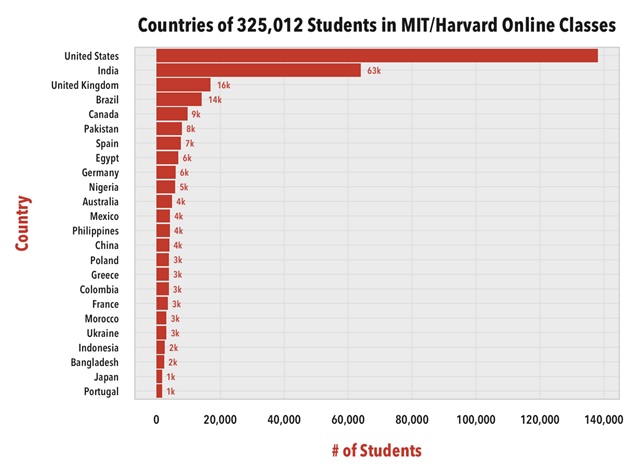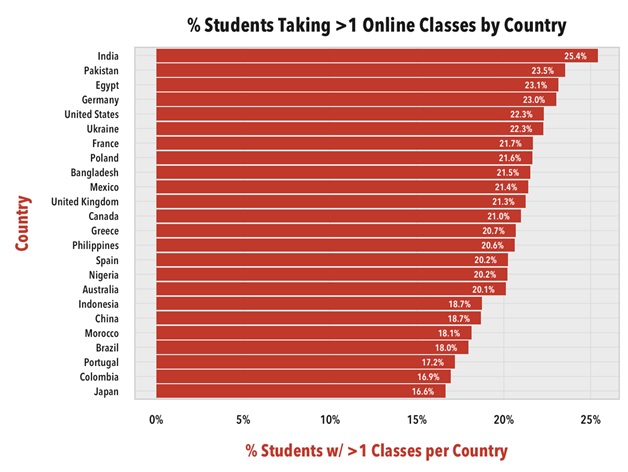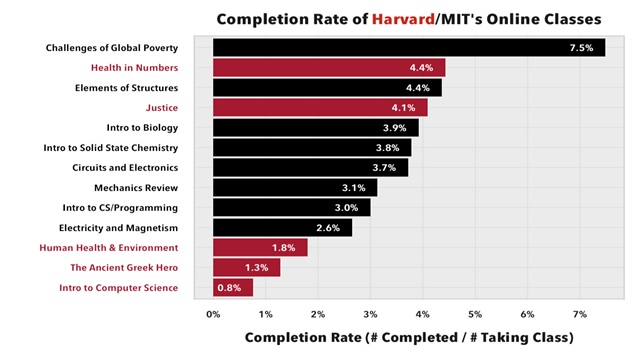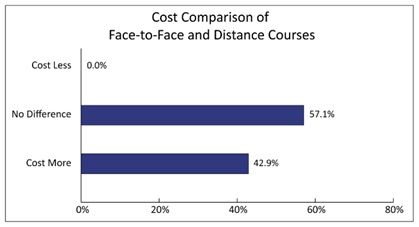Online Education vs Offline Education: Who will be the Winner?
It isn’t a secret anymore that the market of online education is growing fast all over the world and India isn’t left behind. With more than one million registered learners, India is the second biggest source of learners in coursera. The e-learning market in India itself is estimated around $3 Billion and is expected to grow by $40 Billion. In fact, Indian students’ enthusiasm towards online learning can be seen from the data released by Harvard-MIT about their online courses. This Person-Course De-Identified dataset contained 641,138 events, chronicling 476,532 students who have taken up to 13 unique courses from a variety of topics. According to which, Indians were the largest group of nationals registered in Harvard and MIT online courses only second to the USA.

It is not surprising that considering its population and accessibility of material, it ranks as top in a nation of students taking more than one classes.

India is a country where one could experience total opposite sides of the spectrum, on one side you could see people might not have the availability of drinking water but at the same time it is the country with highest internet users in the world. When you mix world’s largest young population in a fast-developing country with higher unemployment and tough competition, you get students who embrace any opportunity that makes them apart from the competition with open arms. It’s hardly a surprise that students in India and other developing world has heavily adopted online learning considering the vast benefits (such as access to world class knowledge pools (Harvard, Stanford, MIT professors), flexibility in time and pace of learning, comfortable learning experience, less anxiety, customized learning experiences and Teachers can speak to a wider audience, etc.)it offers.
But, India or the world for that matter, hasn’t seen a drastic change in traditional education system yet. A few years ago, the world was going crazy over how technology was going to transform higher education and would replace physical colleges.But the current actual scenario couldn’t be further from that. According to a University of Pennsylvania study “The Life Cycle of a Million MOOC Users”, an average of only five percent of the students in seventeen Coursera classes offered through the University of Pennsylvania actually finished their classes. Other estimated completion rates below thirteen per cent. And not all the students who completed their courses necessarily passed. Even in Harvard / MIT courses, the course completion rates are low across the board, from 0.8% to 7.5%.


In a five-year-long study of over fifty thousand students taking both online and face-to-face courses, researchers at Troy University found that online classes had higher failure rates than traditional classroom courses. Today Universities worldwide has not even slightly affected by MOOCs in terms of enrollment or in the tuition fees.
Major drawbacks of the online studies according to Heather Thomas and Kevin Zencak – The Pennsylvania State University are Limited communication, Easier to ignore, Limited teacher instruction and the Need for more personal responsibility.
So, how is it when more and more students are adopting online learning and yet colleges and universities are unaffected by it? The answer is simple. Supplementary learning! As it turns out, online learning is growing which is a fact and also is the fact that the traditional education is unaffected by it. However what drawbacks and problems that MOOCs present has given opportunities for private tutoring to shine. Countries like India, where private tutoring is one of the fastest growing markets since the difference between degrees earned from premier institutions and average colleges is prominent, online tutoring is likely to prosper. A few years back, Delhi university’s cut off marks for enrollment was 100% and the prestigious institutions like IIM-A have more than 99% score in CAT as cut off marks for admission. According to ASSOCHAM’s survey, around 87% of primary school children and up to 95% of the higher secondary attend private coaching classes. Almost every MBA aspirant in this country joins a CAT coaching center in a hope to get in a good B-school. Since most classes run in metros like New Delhi, Mumbai, Kolkata, Hyderabad, Bangalore, and Chennai for civil services, law, C.A. for medical coaching, urban towns like Jaipur, Chandigarh and Kota for Engineering, Pune for Designing or Management etc., small town students either are left behind or face significant lifestyle change to get the coaching they need. This is where small entrepreneurs shine in Indian education ecosystem. With the access to technology and need for themarket, coaching classes have reached to students from remote areas and offered online tutoring for competitive exams. Handakafunda is such an example of a private tutor turned into small entrepreneur to offer CAT tutoring to remote students via an excellent use of technology and online teaching. Based out of Jaipur, India, Handakafunda which started in 2009, has served more than 10, 000 students in its online CAT coaching facility. Not only handakafunda helps students from small cities to have access to the same kind of coaching that students in metro cities have but it also overcomes the limitations of MOOCs and online degree courses.
A major problem of MOOCs and online learning is the drop-out ratio. However, when a graduate from remote India joins handakafundaa or other such online coaching center, it’s highly unlikely for them to drop-out since both the course period is short, goal oriented (to clear CAT) and students themselves are highly motivated and have access to personalized guidance and mentoring from the most reputed tutors.

Another success factor is pricing vs value. Contrary to the popular belief, online courses are not less expensive than physical courses in traditional online learning. A survey conducted by the WICHE Cooperative for Educational Technologies (WCET), found that most colleges charge students the same or more to study online.And when additional fees are included, more than half of distance education students paymore than those in brick-and-mortar classrooms.So, when it comes to getting online degrees or certifications, students think of the value they get out of the online educationcompared to face-to-face education. However, in private tutoring sense, online education is always at the same price as face-to-face education and often is less expensive. In addition to that, the commute cost, the flexibility, and comfort of home, etc. are the factors contribute to the success of online tutoring.
Another drawback of MOOCs, according to David Youngberg – assistant professor of economics at Bethany College, is that It’s too easy to cheat. The honor code seems to be working only when students couldn’t get college credit as the incentive to cheat is very weak. But as soon as you start giving credits and credentials for online learning, cheating would increase. This is not the case in private coaching since most of the students are already graduate and are there for a sole purpose to be prepared for an entrance exam of India’s premier management institutions, they are motivated and their incentive is to score well in these practice exams to be ready for CAT.
Rapidly growing Indian middle class has put more emphasis on good education whichincreases demands of higher educational degrees. This increase in demand for higher education degrees from reputed institutions has made more and more students appear for competitive entrance exams like CAT. With online tutoring, now India is becoming a leveled field for students from remote locations and limited resources to have same accessibilities as students from metro cities and more resources. Online coaching centers such as handakafundbring talented educators from across thenation to the doorstep of students. It is not a surprise at all that the global private tutoring market is projected to surpass $102.8 billion by 2018 for which India alone, has had a record growth of almost 35% in the last five-six years and is likely to touch $70 billion by 2017.
This article was written by Krunal Sagan, co-founder of Epecate and founder of Star stuff Management Consultancy Follow him on Twitter@krunalsagan





Best is online coaching.
Click this link below for CAT Exam – Eligibility, Pattern, Fees, Dates
CAT Exam – Eligibility, Pattern, Fees, Dates
https://www.handakafunda.com/cat-exam-eligibility-pattern-fees-dates/
Important Details and Information about CAT Exam